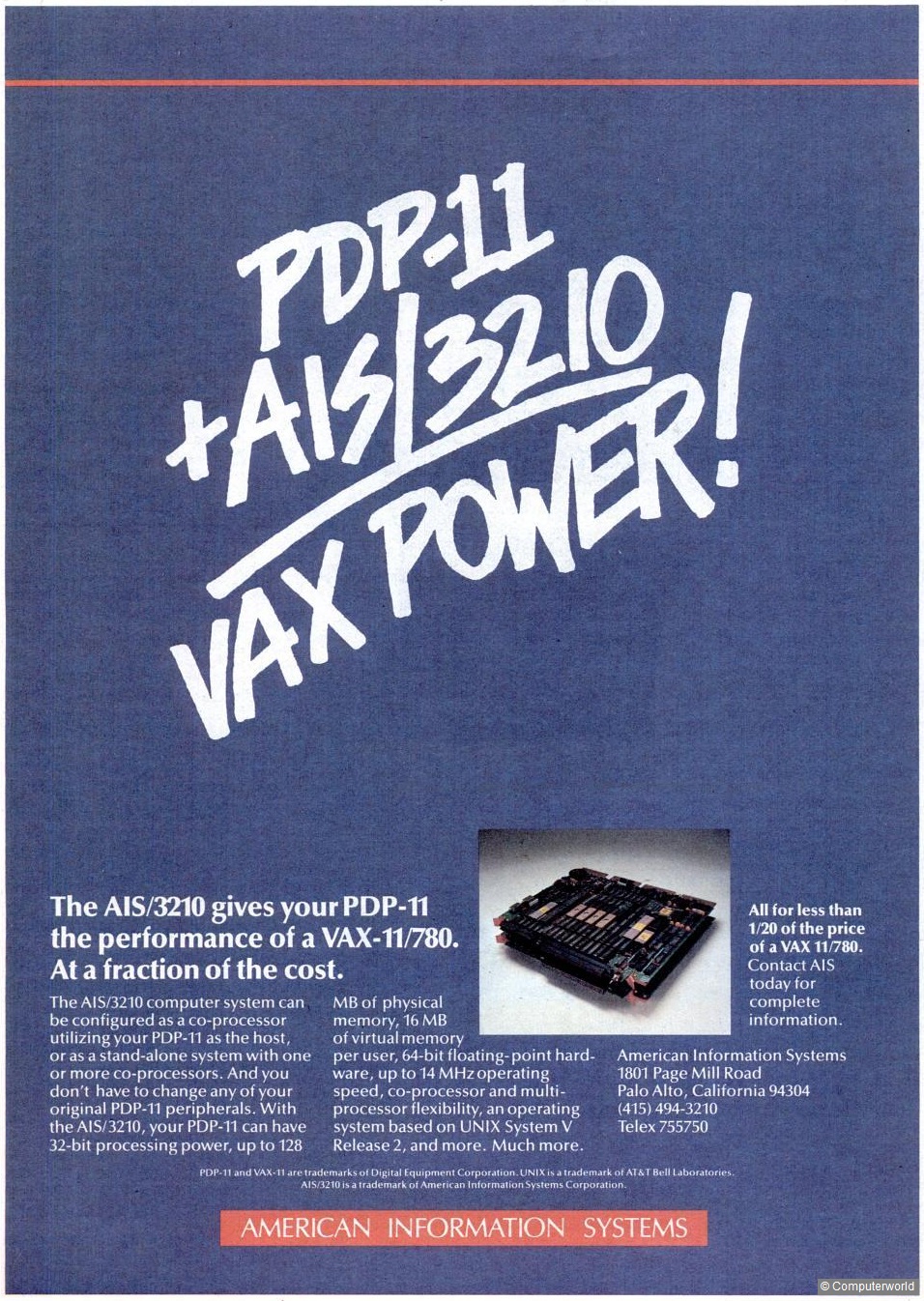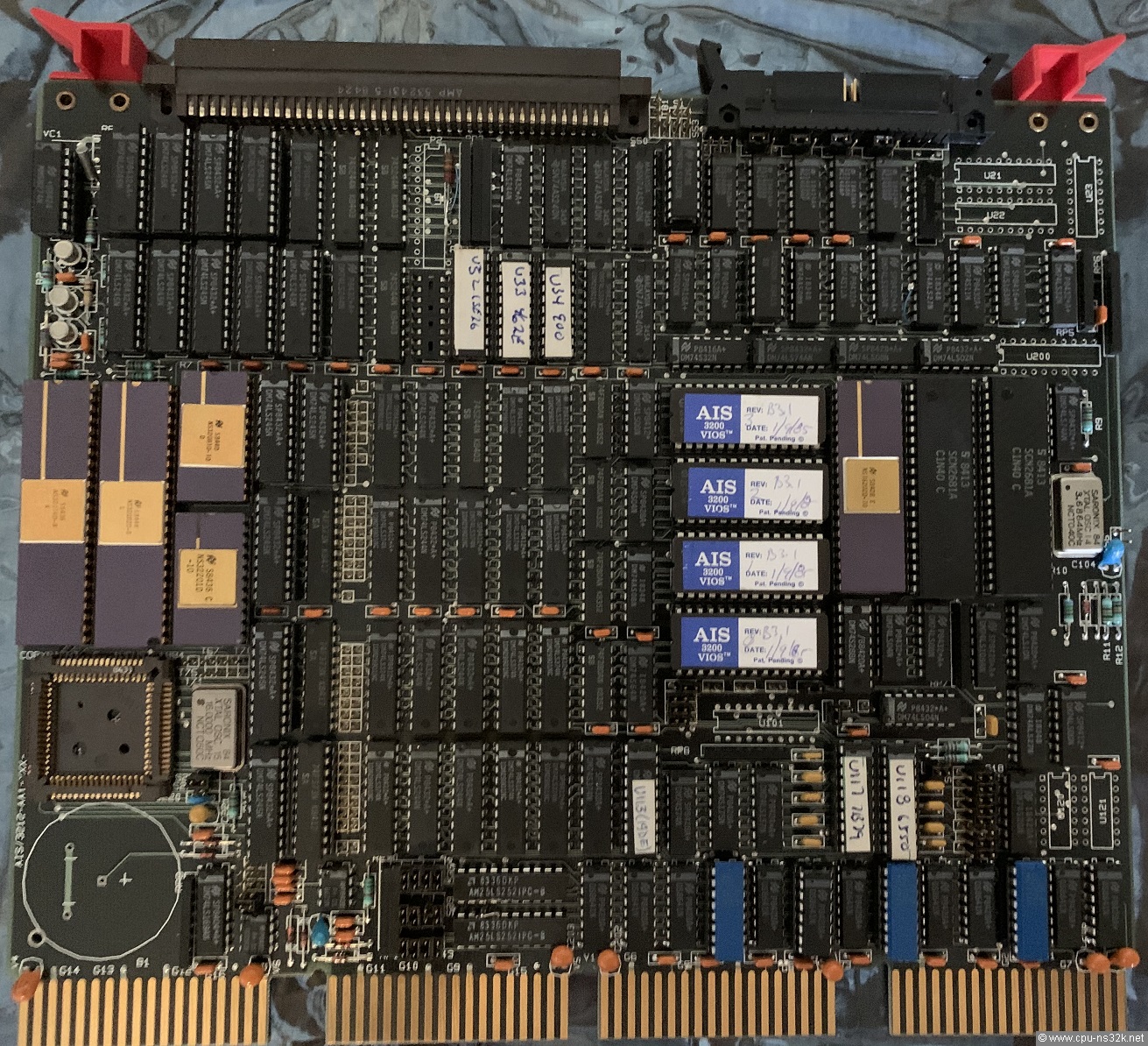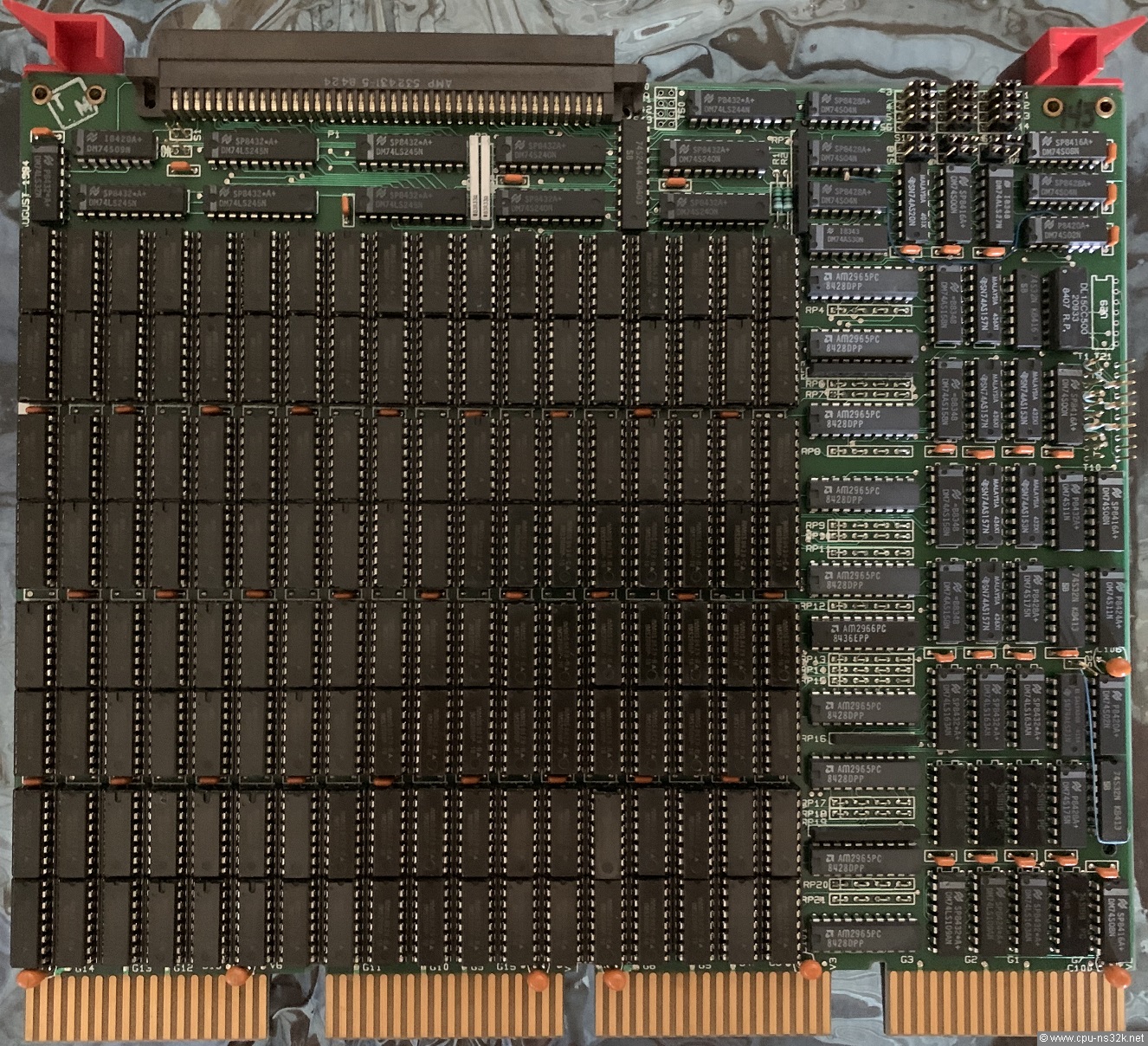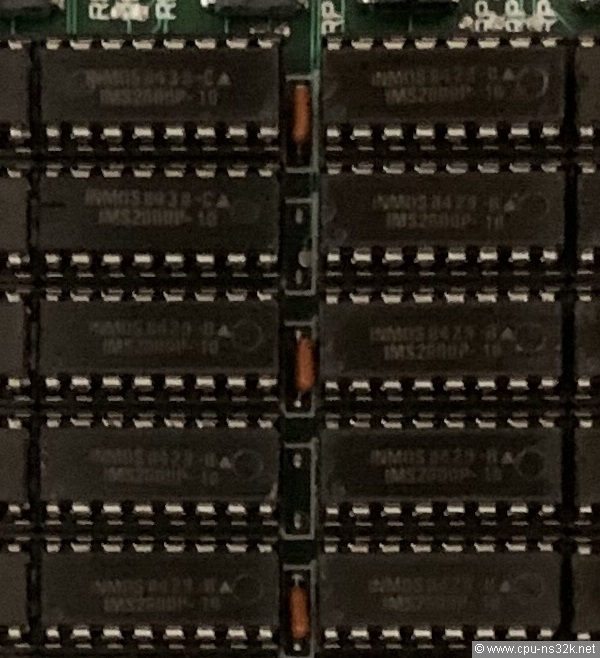American Information Systems = AIS
AIS built co-processor systems for the PDP-11 minicomputer from DEC. This made sense because PDP-11 systems were widely used. Figure 1 shows the simple arithmetic of their business model.

Fig. 1. The magazine Computerworld showed this advertisement of AIS in the 27 August 1984 issue.
The AIS/3210 in the picture above is obviously a Q-bus system. Two boards made the system: the top board is the CPU board and the lower board is the memory board. The board in the next Figure was made for the Unibus. A different product name can be found at the left edge near the empty socket for the NS32032 CPU : AIS/3212.
Unibus and Q-bus are standard bus systems of PDP-11 and VAX-11 computers. The Q-bus is a simpler version of the Unibus. This may be the reason why the AIS/3212 boards are bigger than the AIS/3210.
AIS/3212 can use either the NS32032 CPU or the NS32016 CPU. The system in Figure 2/3 is only running at 8 MHz. This is the speed grade of the used NS32016 CPU and NS32082 MMU. The quartz oscillator near the empty socket is a 16 MHz device. It delivers the clock for the NS32201 TCU.
The left connector at the top edge is most probable used for a private memory bus. The memory board in Figure 3 has the same connector in the same place.

Fig. 2. The photo shows the CPU board of the AIS/3212. The standard group of Series 32000 chips is located at the left edge.

Fig. 3. The memory board of AIS/3212 can hold 4 MByte with 256 kbit DRAMs.
The memory board in Figure 3 uses parity protection. But I have not found the usual SN74280 parity generator chips. The driver devices AM2965/AM2966 are similar to SN74S240/SN74S244.

Fig. 4. Ed said the DRAM devices are from INMOS. I agree. Most probably the type is IMS2800 which is a 256 kbit DRAM.
This chapter was last modified 26 February 2023. Next chapter: Canon